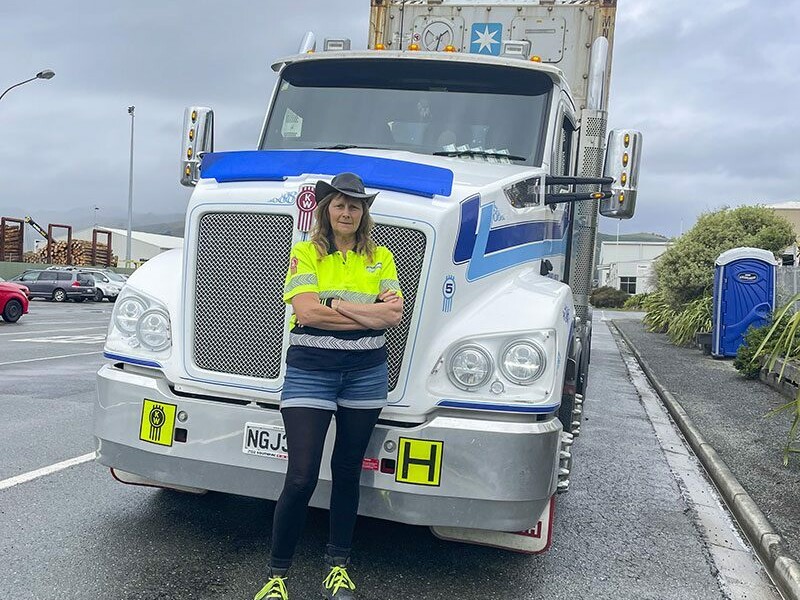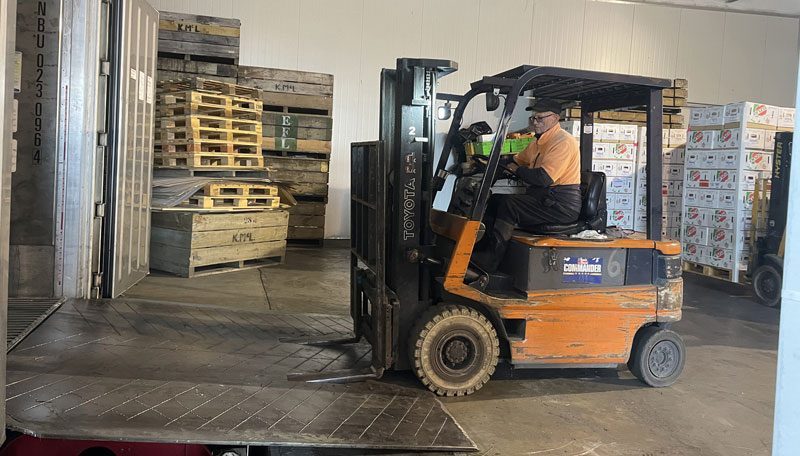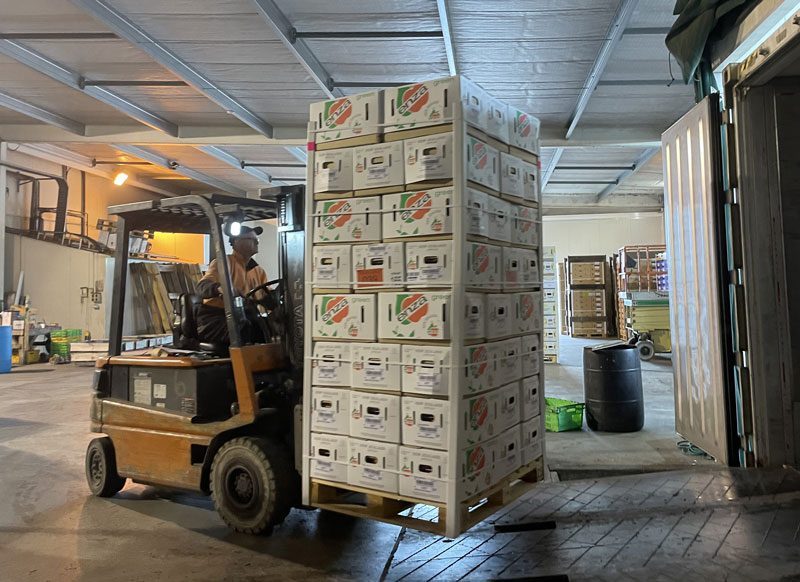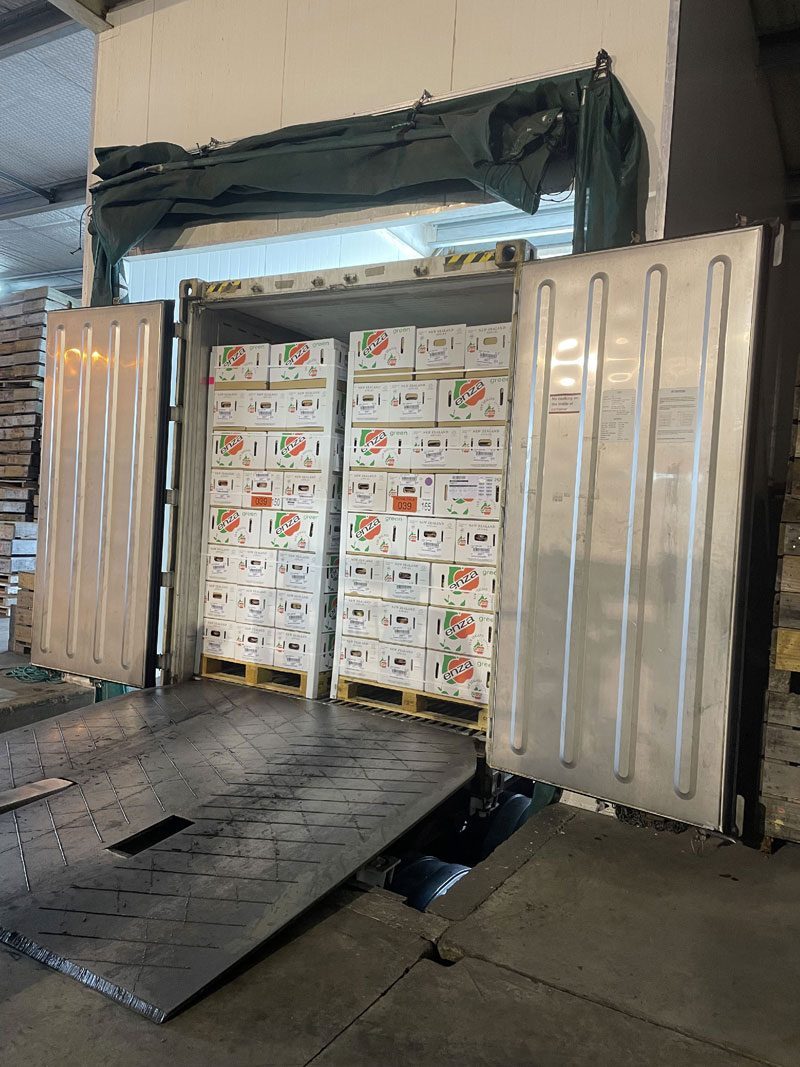Motueka has been called “The Fruit Garden of New Zealand” due to the expanse of orchards filled with apples, kiwifruit and hops. I spent some time with Min Wells, who carts containers of fruit from where it is grown and packed to the port at Nelson.
I met Min at a local packhouse in my hometown of Motueka. She drives a Kenworth T410, which tows a Fruehauf quad (four) axle skeletal trailer for AC Palmer & Sons Limited. Some of you guys may remember Min’s truck being on the cover of Little Trucker Down Under’s first issue back in 2021.
We climbed in the Kenworth, which had a 40-foot container on the trailer loaded with cartons of locally grown apples destined for a country on the other side of the world.
As we made our way along State Highway 60 past the Motueka estuary and up onto the Ruby Bay bypass, Min told me that both fruit and wine is being exported to far flung places by ship; this is the main cargo she carts.
We chatted away as we drove through Richmond and around Rocks Road to Port Nelson and I thought the 12-speed AMT transmission made the stop-start motoring through Nelson’s traffic very easy.
I have been to Port Nelson a few times with Dad, and because you must be over 16 years of age to enter the site, I waited outside the gate and watched the endless stream of trucks coming to the port with containers, timber, and logs.
Fortunately, Min explained exactly what went on inside the Port.
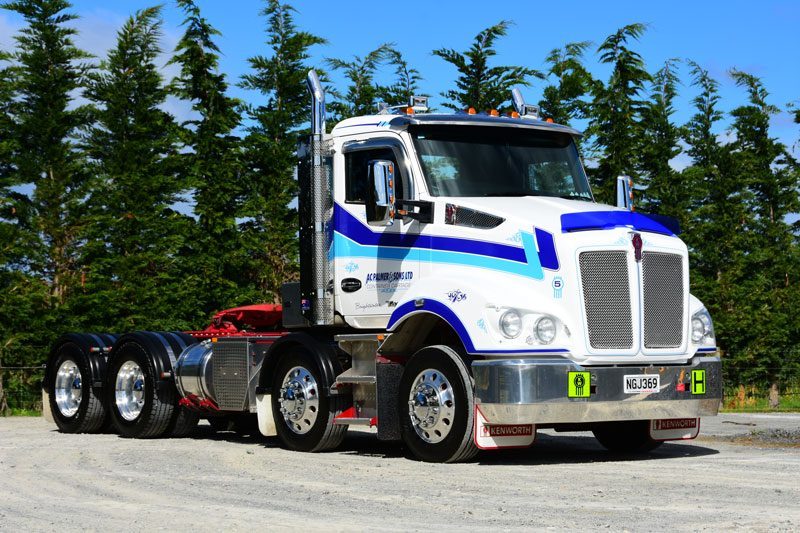
After entering the port and driving through to the transfer area, the full container is lifted off Min’s trailer by a large Hyster (container lifter) which has an attachment that hooks into the top of the container.
It is then stacked in a row with other containers waiting to go on the ship, and if required, hooked up to electricity, which is to power the refrigeration equipment responsible for keeping the fruit fresh inside the container.
An empty container is put back on the trailer and secured to it by ISO twist locks, or container locks as they are sometimes called, basically very strong metal pins which have a handle you turn to lock them in place. It means the container is not able to move off the trailer. With an empty container secure on the trailer behind us, we retraced our earlier steps back to Motueka where Min reversed into a specially constructed pit in the ground called a dock.
Once the container’s rear doors had been opened, a steel ramp was put in the gap between it and the floor of the packhouse so the forklifts could bring the pallets of fruit from inside the cool rooms straight into the container.
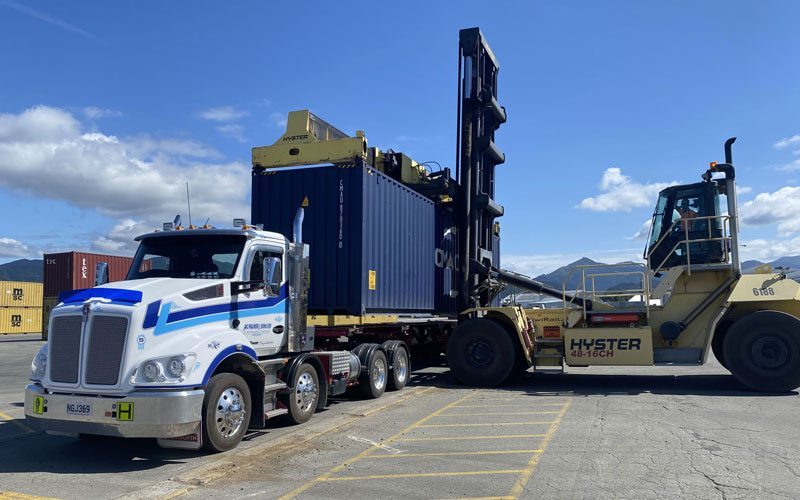
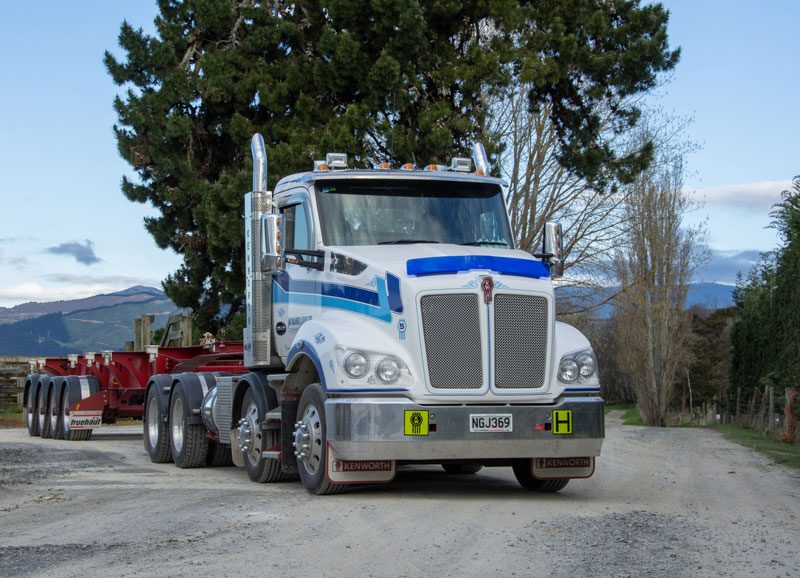
It took very little time for two forklifts working together to fill the container with pallets neatly stacked with cartons of apples. Once the container doors had been closed, a steel locking tag was put through the door handle to secure it which is equipped with an identification number used by the importers receiving the container.
We hopped back in the Kenworth and travelled the 45-minute trip back to Port Nelson. I said farewell to Min, who headed through the port gates to repeat the unloading process.
I’ve seen so many trucks around the Nelson area carrying containers and it was great to see what they do first-hand. Thank you to Min and AC Palmer & Sons Ltd for having me along.

